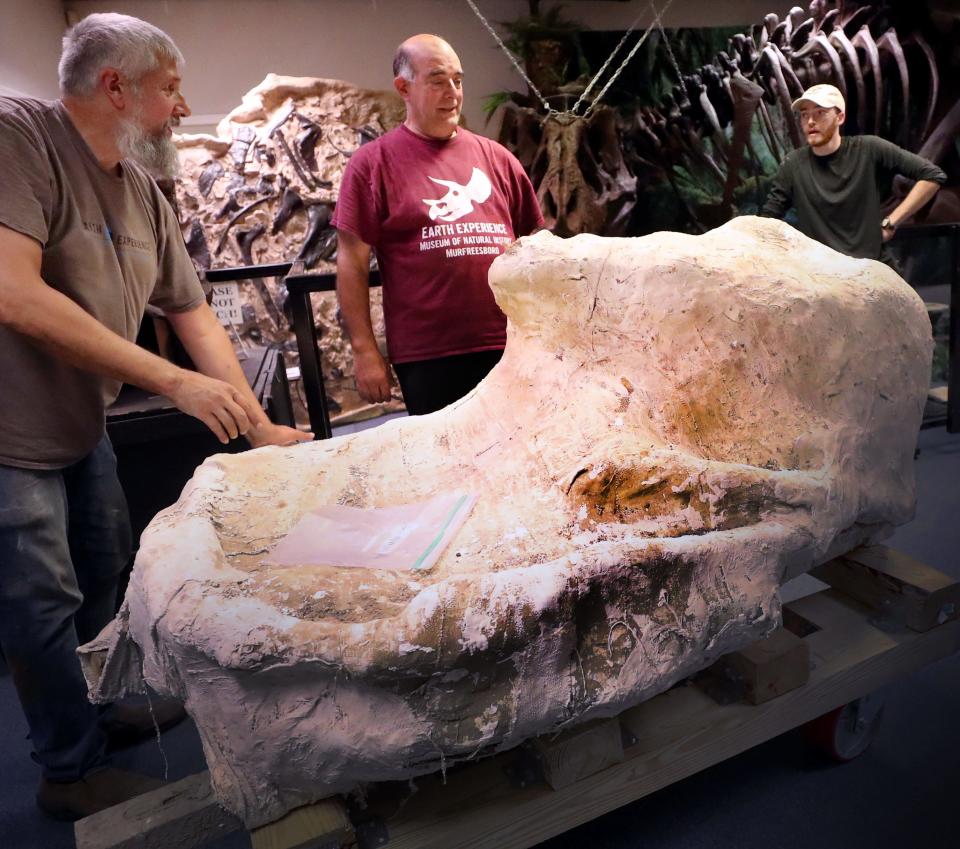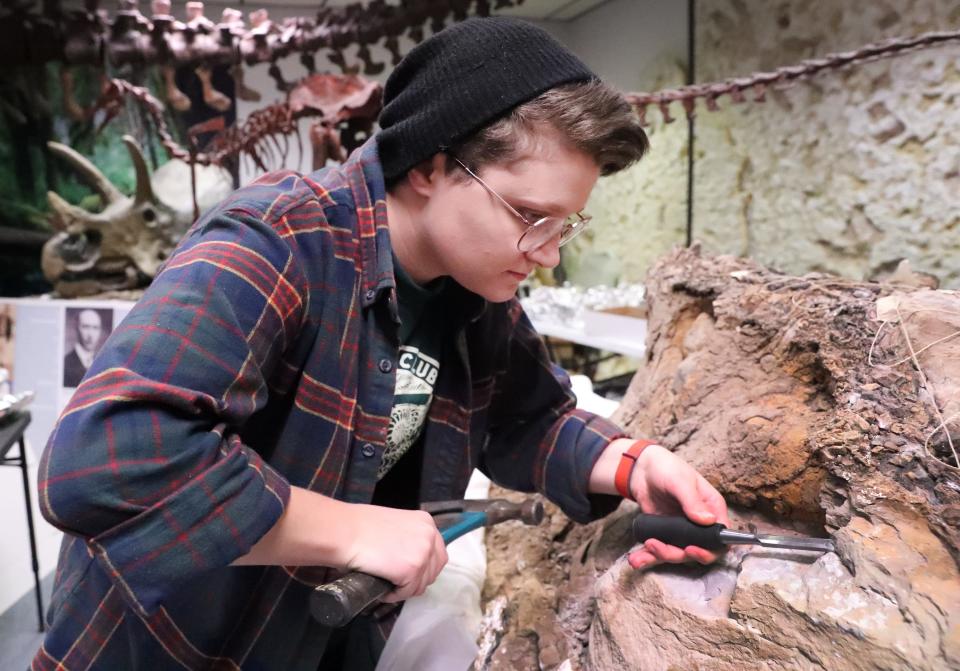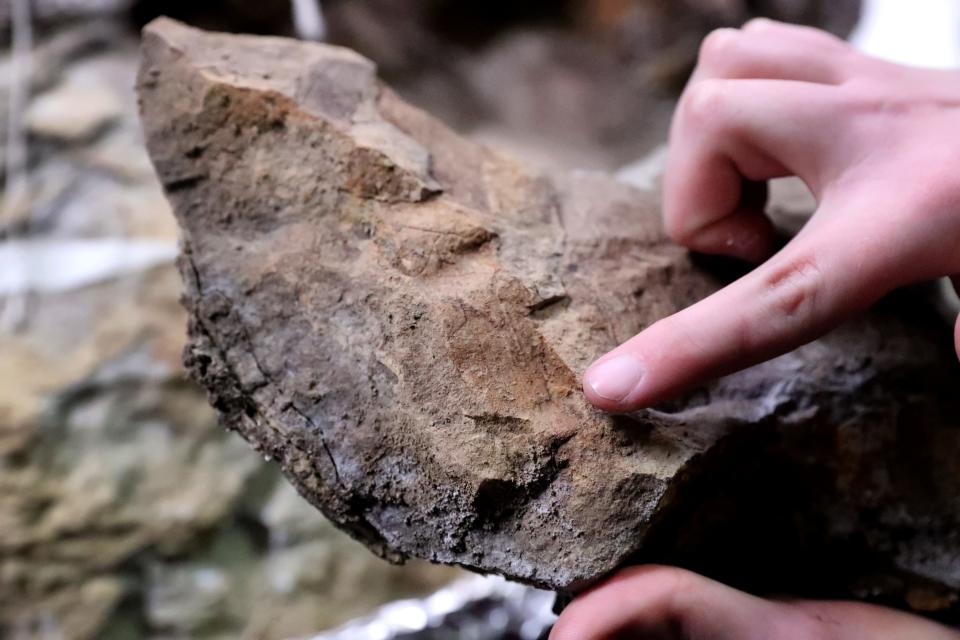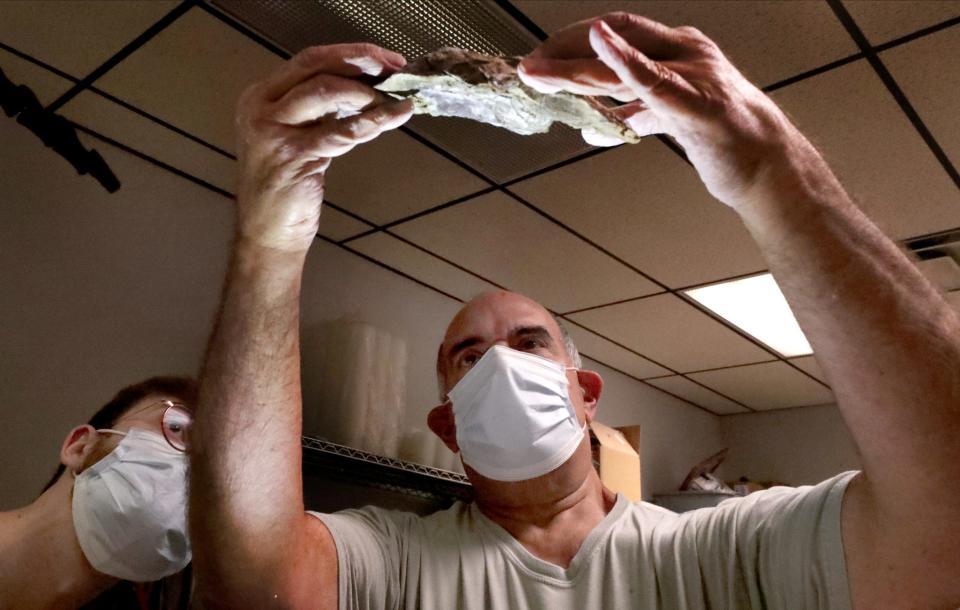MTSU natural history museum team uncover rare Triceratops skull for exhibit
In the 14 years Middle Tennessee State University geosciences professor Alan Brown and the Earth Experience Museum team have been making the journey to Baish Ranch in Montana to hunt for dinosaur bones, they have found many triceratops fossils.
But never a skull.
“As far as dinosaurs, (Triceratops are) very common, but any skull is going to be kind of rare,” Brown said.
But in the summer of 2023, that changed.
The rancher, Shana Baish, came across a Triceratops skull on the property not long before Brown and his team visited.

“When we were there this summer, I said that, you know, I’m hoping someday the museum can get a Triceratops skull. And she said, ‘Well, here’s one you can dig up.’”
The triceratops skull, which made its way to Murfreesboro in September, was exposed on the ranch property. The horns and nose have mostly worn away, but the rest was still buried and is intact.
The Earth Experience Museum is the first museum of natural history in Middle Tennessee, located in Murfreesboro.
The museum volunteers are still unpacking the skull and working the rock away, a process that could take anywhere from eight months to a year and a half.
“I’m too busy,” Brown said. “I don’t get to play on the cool things anymore, so Joe is actually in charge of the Triceratops skull.”

Joe Nochera is a retiree that moved to Nashville and had some “experience doing fossil stuff,” according to Brown. He heads up the skull work, along with Mandi O’Grady and Fischer Touchton.
The team cuts away a small piece of the casing, made of aluminum foil and plaster, to uncover a section of the fossil. Then they begin the intricate process of chipping away rock from the surface, taking care to avoid damaging the fossil itself.
The skull, according to Brown, is approximately 66 million years old.
“Microscopically, in the limb bones of dinosaurs, they add actual layers on the outer part of it, kind of like a tree ring, but it’s only in the outer couple millimeters,” Brown said.

There are no limb bones to accompany the Triceratops skull though, so there is no way to judge its age or when it died.
While in Montana, Brown and his team spend a lot of time wandering around looking at the ground, he said.
“Individual dinosaur bones are pretty common. We probably find about one a day when we’re out there in Montana.
“Paleontologists have been searching for dinosaur bones now for like 150 years, and so we kind of know the good places to go,” Brown said.
Out west just so happens to be dinosaur central. For a dead animal to fossilize, it must be buried, otherwise it will just decompose and turn back into soil.
During the time of the dinosaurs, the Rocky Mountains were forming. As the range was pushing toward the sky, sediment was washing down off the young mountains, burying things.
“If you trace down the Rocky Mountains from Canada all the way down into Mexico, you’re going to find dinosaurs,” said Brown.

A section of the Andes Mountains in South America was also forming around the same time, so there are quite a few fossils in that area as well.
But not all mountain ranges are fossil mines. The Appalachian Mountains formed long before dinosaurs roamed the earth and were already halfway worn away by the time dinosaurs were traversing them. The Himalayas are far too young and formed after dinosaurs went extinct.
The Earth Experience Museum opened in 2014. Located on Old Salem Hwy., the museum is open Wednesday through Saturday, from 11 a.m. to 4 p.m.. Admission is $9 for ages 12 and up, $7 for ages 4-11, and free for children 3 years old and under.
There are countless exhibits, from a full-size T-Rex cast named Frank—"You're not going to find another one within ... 400 miles," said Brown—to fossils of small dinosaurs that prove the animals had feathers. You can see the Triceratops skull on display as it is being uncovered, but it will not be complete for several months to come.
This article originally appeared on Murfreesboro Daily News Journal: MTSU natural history museum team claim rare Triceratops skull for display

